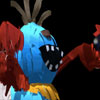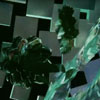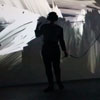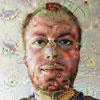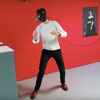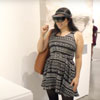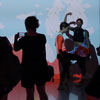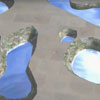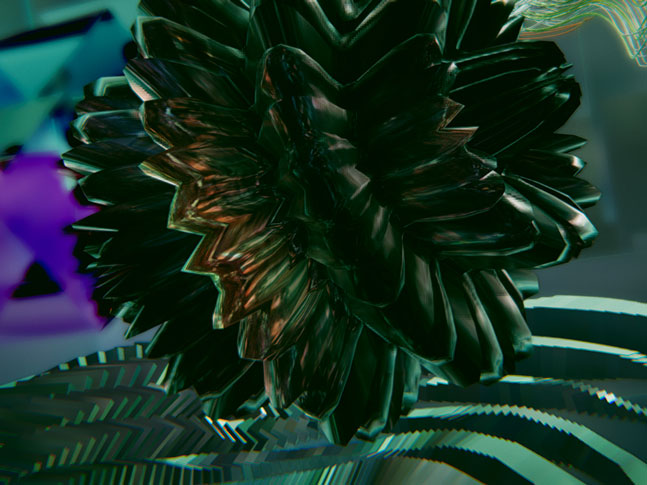
Conformation is a virtual reality installation exploring procedural generated sculptural objects. Users immerse themselves in a world of constantly moving and changing abstract geometries. Computer simulated structures manifest as their own physical identities, existing purely as forms. Viewers can experience the work internally in VR and externally on a projection.
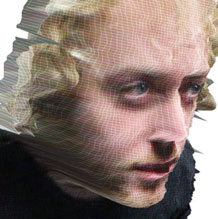
About the artist
Reilly Donovan is a new media artist and experience designer working with emerging technology to produce interactive installations, virtual reality artworks, augmented reality exhibits, and mixed reality experiences. His work explores how computer simulations, machine learning, and interactive environments challenge the boundaries of our senses. It examines how machines are molding our future, changing our culture, and confronting our perceptions of reality. He is currently experimenting with ways to unify simulated and physical realities into one cohesive phenomenon where the distinction between the two become irrelevant and a third reality takes root.
Skills Applied
 PROGRAMMING LANGUAGE
PROGRAMMING LANGUAGE
 UNITY GAME DEVELOPMENT ENGINE
UNITY GAME DEVELOPMENT ENGINE
Message From The Artist
Conformation was made using the Unity 3D game development engine and is written entirely in C#. All of the objects in the environment are made using procedural content generation. Go to catlike coding to find out more about writing geometry from scratch in Unity using C#. The STEAM wiki below has links to simple tools like Google Cardboard to make your own VR headsets. You can dowload free apps to try it out.
Explore Artist Tool
The Explore Artist Tool provides a step-by-step process for getting to know the artist, to see examples of the artists work, research the science and technology that informed the work, experiment with some hands on activities and tools to better understand how the artist thinks and works, collaborate with your peers to exchange ideas on what you learned and what you liked, and finally to present something that you write or create that is inspired by your research and exploration. This tool will take you through each stage of the process with a focus on each artist’s work.
Explore all artist pages
In the explore phase you go to the Explore Artists to click through each artist page and learn about them all. You can watch their videos, read their bios, and flip through their STEAM wiki for articles, science research and STEAM activities related to the artist’s work. STEAM stands for science, technology, engineering, art and math. Look out for how any of these are used in the artists work. The goal is to learn a little about each artist and start to think about which one inspires you most or which one you would like to learn more. Your class could decide to all work together on one artist, or that everyone choose a different artist.
Research the STEAM
Once you have explored all the artists it is time to pick your favorite and go back to their page. Now you can dig deeper in the STEAM wiki to research the artist. Learn as much as you can about how the artist made the installation. Find out about the technology that was used. What is the science that informed it? How does the artist work impact communities? the environment? Why do you think this work is interesting or important? The goal here is to pick a STEAM activity. Again it could be a group project or individual project.
Time to experiment and create with hands-on activities
Now that you and your class have decided on the artist and STEAM activity it is time to start experimenting. if you are writing a report start your draft, if you are creating an art piece or installation start sketching or constructing prototypes or you may be trying out a new science experiment. This is your chance to do some hands on project to really understand the artist’s art process.
Collaborate with peers to share and get feedback
The next step is to collaborate with your peers to share your work, exchange ideas and get feedback. Perhaps you have been working on an experiment and you need some help. Maybe you are excited about something you learned or created and just would like to share with you peers. This is the time to discuss and listen to other people’s ideas and what they learned to get a different perspective. Check out the Feedback Tool for some suggestions on how to give and receive feedback constructively.
Present your final creation
Once you have received feedback and finalized your project it is time to share. This could be in the form of an art exhibit if everyone chose to create art. Perhaps you all decided to work on the same activity and you all share your experiences working on the project. You will decide this with your teacher and peers. Have fun and don’t forget to share your work with us in the form of photos or videos! We would love to see what you learned and we will be sure to share with the artist.
STEMarts Wiki
The STEAM-Wiki is a place to get started with your artist research. You will find links to articles, images, video, and tutorials that relate to Reilly Donovan’s work.
You can search by clicking on the links below or you can click on the topic words in the word cloud for specific areas of interest. For example, VIRTUAL REALITY to learn about VR research or Tilt Brush for more about this exciting 3D painting tool. If you are looking for STEM + Art activities type in STEAM Activities. To view all options, use the keyword ALL.
Remember the resource is an open forum sharing links and ideas that others have found – always check your sources and give credit where credit is due. The open source movement generously shares its knowledge and relies on user feedback – so if there’s something really good or doesn’t work let others know.
3D paint tool Algorithm Algorithms Artificial intelligence Art Tools Creative coding creative computing Digital Art digital media Google cardboard machines and art New Media Art STEAM activities Tilt brush VIEW ALL Virtual Reality VR


